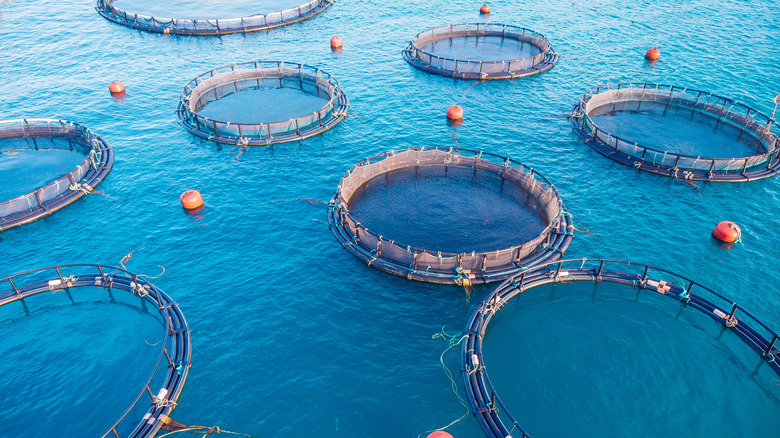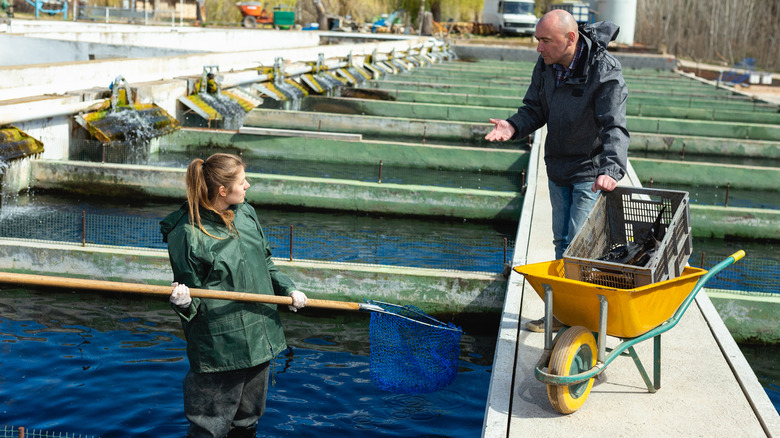Why Aquaculture Is Negatively Affecting Some Small Communities
Aquaculture is a relatively new word. While most people have enjoyed the benefits of this widespread industry, even if they've done so unknowingly, it now appears to have some negative side effects, depending on perspective. For seafood fisheries and consumers, it expands access to those delectable marine morsels, going from pots to plates across the globe. But at what cost in the bigger picture?
It helps to understand what aquaculture actually involves. The National Oceanic and Atmospheric Administration (NOAA) explains that aquaculture, in broad terms, refers to controlled water environments for cultivating aquatic organisms for use by humans. Intents range from commercial or recreational fishing to public-interest use, such as habitat restoration or regenerating threatened species. Known in layman's terms as "fish farms," these enterprises are basically where fish and other seafood are raised for food, per the 4-H Learning Network. They span both freshwater and oceanic fish and shellfish, with freshwater aquaculture of trout, tilapia, and catfish comprising the largest percentage of U.S. aquaculture by far. Marine aquaculture features ocean species such as salmon and shellfish, including oysters, clams, and mussels, according to NOAA.
When seafood lands in supermarkets, you'll likely see the distinction on labels such as "farmed" or "wild caught." Advocates for both methods stand strong on the benefit-versus-harm debate. Meanwhile, large sea-industry conglomerates take up coastal space in even small towns, sometimes with unwelcome consequences.
Corporate versus local fishing
Debates over farmed-versus-wild-caught seafood revolve around environmental and wildlife-habitat threats, which affect stainability and availability of your favorite seafood. The "bigger picture" involves problems such as habitat invasion, in which human-raised fish alter the ecosystem and food web, according to the Center for Food Safety. Concerns of disease spring from cramped breeding pens, and the use of antibiotics threaten marine environments. But problems arise on micro-levels as well.
Smaller communities are demanding a closer look at the mega-growth of aquaculture, including rural areas of Maine. In Beals, a town with under 500 residents, three netpen salmon farms operated by Canada's Cooke corporation have created problems ranging from excess trash to interference with local lobster fishing, per IntraFish. The Penobscot Bay Press reports a pushback on large-scale fish farms, including Norwegian-based proposals for Frenchman Bay. The nonprofit "Protect Maine's Fishing Heritage Foundation" cites concerns over foreign and corporate money buying up Maine communities at the expense of local fisheries.
In the Pacific Northwest, similar issues abound, as noted by the Seattle Times. At the small Cypress Island, which hosts an aquatic reserve and natural resources conservation area, a massive aquaculture accident in 2017 caused the release of up to 263,000 Atlantic salmon, threatening the state's aquatic ecosystem as non-native fish compete with local species for food and habitat. And in 2018, at least 21 tribal leaders with indigenous fishing rights joined the call for cessation of aquaculture in the Puget Sound.

